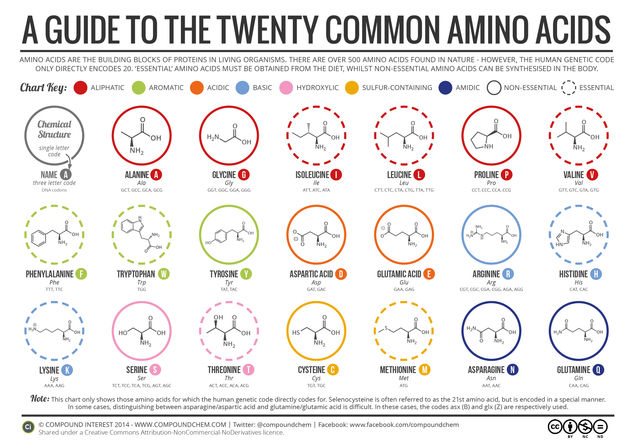© Compound InterestA Brief Guide to the Twenty Common Amino Acids
The proteins that make up living organisms are huge molecules, but they’re composed of tinier building blocks, known as amino acids. There are over 500 amino acids found in nature, yet, of these, the human genetic code only directly codes for 20. Every protein in your body is made up of some linked combination of these amino acids – this graphic shows the structure of each, as well as giving a little information on the notation used to represent them.
Broadly, these twenty amino acids can be sorted into two groups: essential and non-essential. Non-essential amino acids are those which the human body is capable of synthesising, whereas essential amino acids must be obtained from the diet. The non-essential amino acids are alanine, arginine, asparagine, aspartate, cysteine, glutamic acid, glutamine, glycine, proline, serine and tyrosine; some of these can also be termed ‘conditionally essential’, meaning that they may be needed from the diet during illness or as a result of health problems. This sub-category includes arginine, glycine, cysteine, tyrosine, proline, and glutamine. The essential amino acids are histidine, isoleucine, leucine, lysine, methionine, phenylalanine, threonine, tryptophan and valine.







